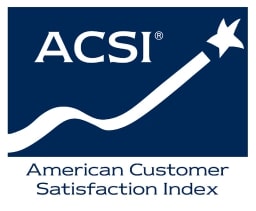If you’re exploring Internet options, you’ve likely come across fiber and cable connections. Both provide fast and reliable Internet suitable for most homes and businesses, but they differ in key ways. Let’s break down these differences to help you determine which is the better fit for your needs.
What Is Fiber Internet?
Fiber Internet, or fiber optic broadband, uses cables made of thin, flexible strands of plastic or glass. These cables transmit data as beams of light instead of electrical signals, allowing for incredibly fast and efficient data transfer. In fact, a single fiber optic cable can handle more data than thousands of conventional copper cables.
Pros and Cons of Fiber Internet
The standout advantage of fiber Internet is its blazing speed. In areas where it’s available, fiber can deliver speeds of up to 10 gigabits per second. It also boasts low latency, making it ideal for streaming high-definition videos, online gaming, or any activity that requires real-time responsiveness. Additionally, fiber Internet is highly reliable. Because it doesn’t rely on electrical signals, it’s less prone to outages caused by storms or electrical malfunctions.
However, fiber Internet does have drawbacks. The most significant is cost. To access the fastest speeds, you may need to spend over $100 per month, whereas cable Internet typically costs around $50 per month. Fiber is also less widely available. Currently, only about 60.5 million homes in the U.S. have access to fiber, though its availability is steadily expanding. If fiber isn’t offered in your area yet, there’s a good chance it will be in the future.
What Is Cable Internet?
Cable Internet delivers high-speed Internet through the same coaxial cables used for cable television. These cables transmit data using sound waves, providing households with a reliable connection. Cable Internet is the most popular type of connection in the U.S. If you have access to cable TV, you likely have access to cable Internet. While it isn’t as fast as fiber, cable Internet still offers speeds of up to 100 Mbps, which is sufficient for activities like streaming, gaming, and general browsing.
Pros and Cons of Cable Internet
The main advantage of cable Internet is its widespread availability. It’s accessible in most urban, suburban, and even rural areas, unlike fiber Internet, which is still limited in scope. Cable is also more affordable and often bundled with services like cable TV, making it a cost-effective option for many households.
On the downside, cable Internet doesn’t match the speeds of fiber, particularly when it comes to uploads. While download speeds of up to 100 Mbps are sufficient for most online activities, upload speeds are significantly slower. This can be a drawback for content creators or those who frequently upload large files. Additionally, cable networks are prone to congestion, leading to slower speeds during peak usage times. Cable Internet also relies on electricity and can be affected by severe storms or power outages.
Finding the Right Connection
Choosing between fiber and cable Internet depends on your needs and priorities. If your primary activities include browsing and streaming, cable Internet may be the better fit due to its affordability and widespread availability. On the other hand, if you require ultra-fast speeds for creating and uploading content, or if you want to avoid network congestion, fiber Internet is worth the higher cost—if it’s available in your area.
No matter what type of Internet connection you’re looking for, our team at GVEC Internet is here to help. As a trusted high-speed Internet provider serving South Central Texas since 1998, we’re dedicated to delivering reliable service at affordable prices. Visit one of our locations in Gonzales, Schertz, Seguin, La Vernia, or Cuero, or contact us today for more information.


